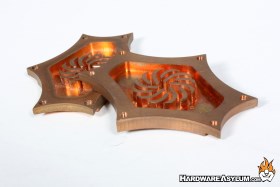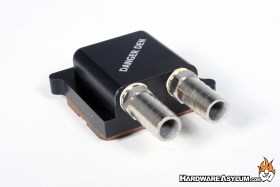Do I Need to Watercool my PC? Fact or Fiction
Author: Dennis GarciaThe Reasons behind Watercooling
I was recently watching a JayzTwoCents VLog where Jay was addressing a question he frequency gets. “Should you watercool your computer?” The video is 13 minutes long and he goes into detail about the pros and cons of watercooling and basically comes to one conclusion.
Yes, you should watercool but, only if you already have top of the line hardware.
In a sense he is calling the watercooling movement an elitist hobby and that watercooling anything else is just a waste of money. Thing is, he isn’t wrong.
Be sure to check out the Vlog if you are curious
I have been around long enough to watch, and take part in, the emergence of watercooling. I know for a fact that you don’t need top of the line hardware to see the benefits of watercooling and many of the early adopters never had top of the line hardware to begin with. In a way that is how they could afford to advance the hobby to what it is today.
Thing was, back then all of the watercooling gear was designed to be universal. For instance you didn’t buy a waterblock for XYZ processor you bought a block with mounting hardware for an Intel platform and it would fit on ANY Intel system. The same was true for AMD. Video card cooling was also different where the waterblocks you bought would simply replace the heatsink and just cool the GPU. Cooling the VRM was still done passively and if you were cooling your case properly that wasn’t an issue.
Some of you may not know this but I designed my own waterblock back in the day. It was an ornate prototype that was expensive to build and based on technology current at the time. It performed extremely well and I had plans of building a few to sell. Problem was it was expensive and that trend ruined hobbyist watercooling.
So what happened?
Over the years competition shook up the DIY watercooling market and what was once the quest for “The Best Waterblock” turned into “What is the best block I can buy with my lawn mowing money?” Yes, when watercooling hit the mainstream it was driven by budget players and caused many of the industry pioneers to close their doors. To make matters worse watercooling fell out of popularity in the United States while the hobby skyrocketed in Europe. The Shipping and VAT made it difficult for US suppliers to make a profit and were forced out.
Around this time Danger Den introduced the full coverage waterblock and changed the way people watercooled their video cards. Not only could this block cool the GPU but would remove heat from the memory chips and VRM at the same time. Overall it provided better cooling performance and was easy to implement in multi GPU systems.
The downside was each waterblock had to be designed for a specific video card. So if you had the top of the line Radeon using a reference PCB the block would fit however a custom card like an EVGA Classified would require a different design. This compounded development time, manufacturing and storage costs. Miscalculate any of that and you are left with some very expensive paper weights.
This single innovation is what transformed watercooling from something the causal computer enthusiast would do for fun into the elitist activity dominated by those with the deepest pockets. Sure, you can still watercool your CPU but these days you only get noticed if your full system is watercooled or if you start bragging about your $6000 watercooling loop like it is something to be proud of.
Don’t get me wrong “All of This” is the cost of being a modern computer enthusiast and it is how the hobby has changed over the past 8-10 years.
Let’s get back to the question at hand.



